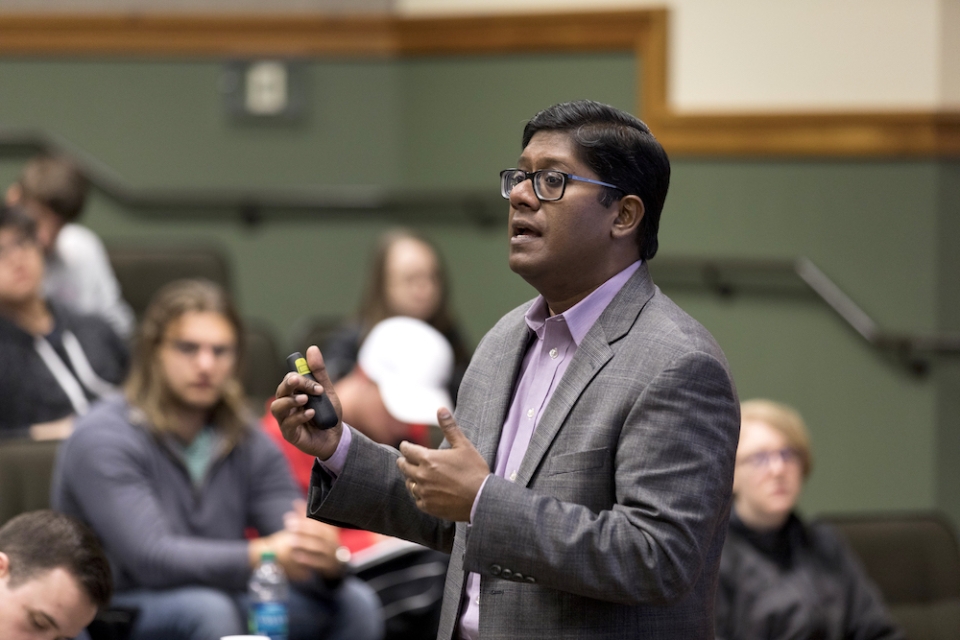Direct deposit hits every month like clockwork thanks to a small health club in Texas.
It was there a gym manager named Peter Kight devised a process to automatically deduct monthly dues from members’ bank accounts, which proved an overnight success. Customers jumped at the chance to do away with check writing, and the gym became profitable within six months.
It worked a little too well, and Kight knew it. He soon quit to take his automated payment idea beyond the health club. Thus, CheckFree was born and with it the financial technology industry — FinTech.
More than 35 years later, advancements in computing power pushed the industry into a state of rapid growth — most of it happening right here in Georgia. Seventy percent of all U.S. credit and debit payment swipes are processed through Georgia’s data hub, and it’s growing by the minute.
“When you think about evolution of mechanical things, Henry Ford was great because he automated the car making process. He made it so you could send it down the line and stamp out a lot of cars. FinTech is an evolution of that idea,” says Jacob Crowe (BBA ’89), who has spent a decade working in the FinTech business. “FinTech is about making processes cheaper, better and faster. It could be for payment systems, bank systems, loan systems, personal systems — it can apply to nearly anything in the financial industry. Some people like to say it’s disrupting, but FinTech is really just a term used to describe how companies develop and use technology to upgrade or enhance their processes.”
He should know. A former executive with the banking services company CompuCredit, Crowe left his steady paycheck to help run the FinTech startup GreenSky in 2008. Ten years later, its IPO raised more than $1 billion thanks to an artfully crafted smartphone app that facilitates loans for home improvement projects.
Success in the industry, Crowe says, hinges on improving the behind-the-scenes aspects of modern business.

“When there is a process that’s working — for example you go to your bank, make a deposit, and it shows up in your account — it’s invisible. You never think about it,” he says. “What the public doesn’t really see is all the steps it took for that check to become a scanned image, then flow through the Federal Reserve, and then back to the issuing bank for the transaction to be captured and recorded. So FinTech is about automating those kinds of processes, which is good for the business and good for the consumer. The public doesn’t get to see all the things that happen behind moving money.”
If FinTech is hard to see now, it was all but invisible in the 1980s and ’90s, when Atlanta planted the seeds that would nurture the industry’s boom. The city installed miles of underground fiber while state legislators removed caps on credit card interest rates and annual fees. Overnight, Atlanta become the most desirable spot to house the nation’s financial datacenters. Like a gold rush, payment processing companies flocked to the city. As their headquarters began dotting Georgia SR 400, the financial industry dubbed the stretch of highway “Transaction Alley.”
“It actually didn’t happen on purpose,” says Bob Trotter, executive partner at the research advisory firm Gartner. “The FinTech industry was developed on the backside of transaction processing. It started with the question of making sure banking ledgers are correct when going online, but has been overtaken by innovation. Now mobile apps can do all this online banking for you. They can hail a taxi, have food delivered, pay for books — all of that is done because of the kind of innovation that is completely changing large industries right now. And Atlanta sits at the center of it.”
More than 100 FinTech companies are located in Georgia. They employ more 40,000 workers and bring in north of $30 billion annually, and every year, that number goes up. The industry’s ravenous appetite for talent led the Metro Atlanta Chamber of Commerce to convene a FinTech Advisory Board and spurred the Terry College to create an area of emphasis in FinTech for MBA students — the first of its kind.
The area of emphasis aims to fill a void in the marketplace. Despite FinTech’s brisk acceleration (Goldman Sachs estimates that $4.7 trillion of financial services revenue is at risk of displacement from FinTech), companies are having difficulty finding workers with the right combination of technical abilities and financial acumen.
Students who graduate the program are primed for jobs in fields such as data analytics, project management and cybersecurity in both traditional finance spaces and emerging technology sectors like blockchain and cryptocurrency.
“We reached out to alumni in the FinTech industry and started conversations with them about the needs of the industry to determine what kind of labor they require, and we saw there was a perfect opportunity for us to meet that demand,” says Santanu Chatterjee, director of Terry’s Full-Time MBA Program. “We started putting together a curriculum in order to understand how we could ensure our graduates have a firm grasp on the principles and applications of financial technology, and we realized we were going to need to go outside the classroom.”
Luckily, Trotter was plugged in. With seats on the advisory boards for both Terry’s Management Information Systems Department and the Atlanta Metro Chamber’s FinTech group, he was in the perfect position to connect the industry’s leaders with its talent developers. Like the Texas gym manger, he saw a better way and put the two together.

“All of these companies are innovative in a fast-growing space. They have portfolios of ideas about building the next application or how to connect to the consumer in a new way, but what they lack is the capacity — the resources, the employees and the time — to develop those ideas,” Trotter says. “So I made a pitch to the FinTech Advisory Board. I told them that only two or three of their new project ideas ever get off the ground because what they’re doing most of the time is working on improving existing applications. They really are not getting into the innovation, which is a perfect thing to hand off to business students.”
He shared the idea with Terry College, where Chatterjee was already investigating ways to tie FinTech coursework more closely to market demands. The two began regular conversations, which led to a semester-long capstone project for MBA students that would come from companies on the FinTech Advisory Board.
“It was exciting for us because the Terry College was the first one to actually bite onto this idea and set something up,” Trotter says. “We held biweekly conference calls between myself, the Terry College folks and the CEO of Global Payments to scope out an approach for connecting these students with projects where they actually build something that they would deliver back.”
That’s exactly what took place. Under the guidance of Terry MIS professors and funded by a grant from the Bill and Melinda Gates Foundation, two teams of Georgia MBA students took over software development projects for the company. At semester’s end, they presented their work to Global Payments (which hired one of the presenters) as well as the entire FinTech Advisory Board.
“I couldn’t be happier with the results we achieved,” says Chris Justice, CEO of Global Payments. “Several of our executives worked closely with the team and found the students to be creative, passionate problem solvers. Over the course of the semester, the two projects took on a life of their own. It’s clear these students provided a unique perspective we were otherwise missing. Because of these projects, Global has improved its product set while increasing the value of the overall sales pipeline.”
“FinTech is about making processes cheaper, better and faster. It could be for payment systems, bank systems, loan systems, personal systems — it can apply to nearly anything in the financial industry.”
That partnership illustrates a defining attribute of the FinTech ethos by finding a new way to achieve better results, says Crowe.
“The best way to prepare for a job in FinTech is to study the ecosystem and understand how it works,” he says. “Once you find the part that needs to be updated, that’s where you focus. If you think about all the things that happen behind moving a dollar from one person to another, you realize that there’s a system that tracks it on one side and there’s a system that tracks it on the other side. So understanding the entire process of how it works and then figuring out where is the weak spot, that’s what a lot of startups do — they identify the big problem and they form a company to fix that problem.”
Students naturally gravitate toward new ideas, and their untainted outlook is a benefit in innovative spaces, Trotter says.
“These projects that FinTech companies can’t get to would cost hundreds of thousands of dollars if they’re turned over to someone to develop them,” he says. “Innovation is best done by the generation that comes after us. Students don’t walk in with paradigms of what we can and cannot do. They may think of transactions that haven’t been considered yet. That’s where the really interesting stuff is happening.”

